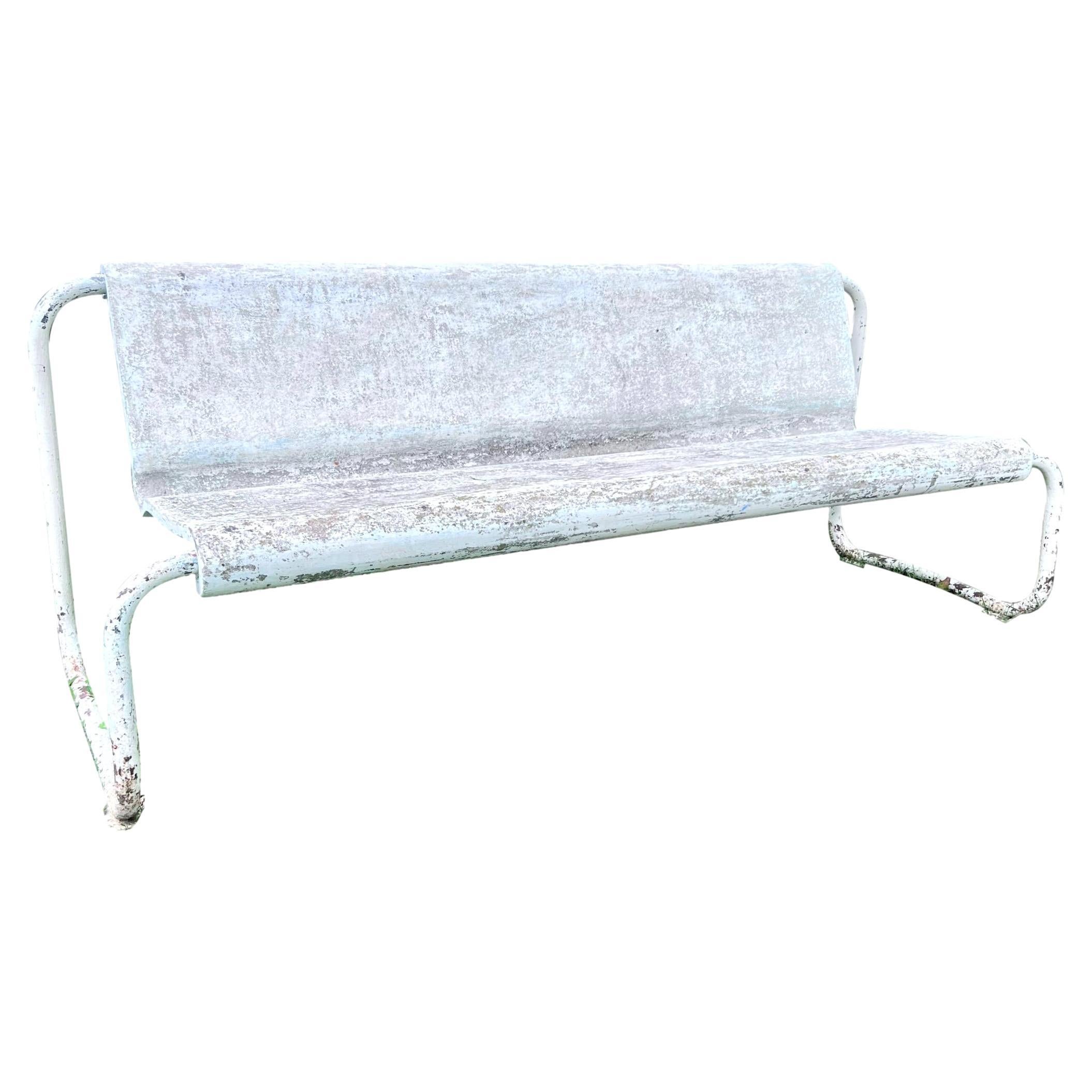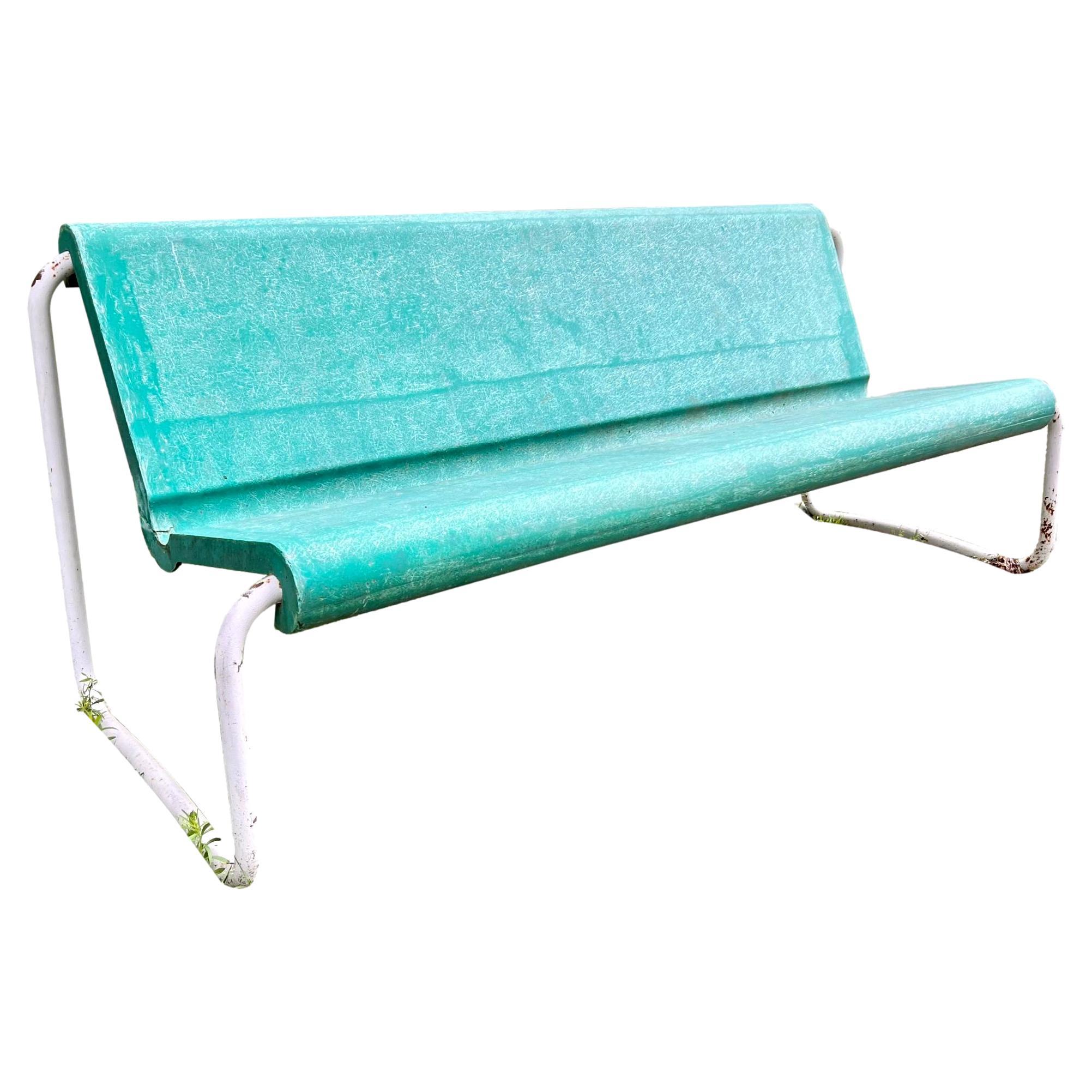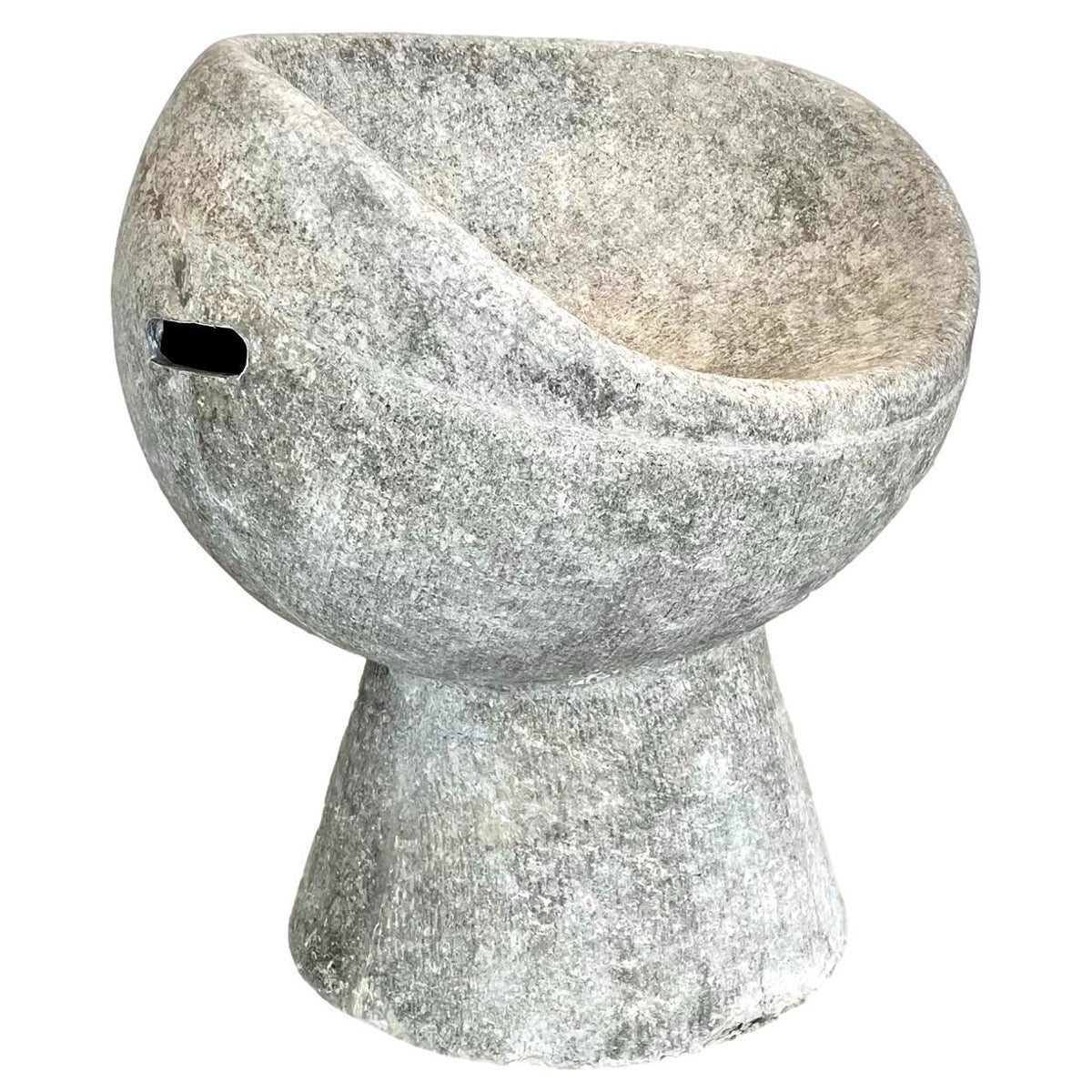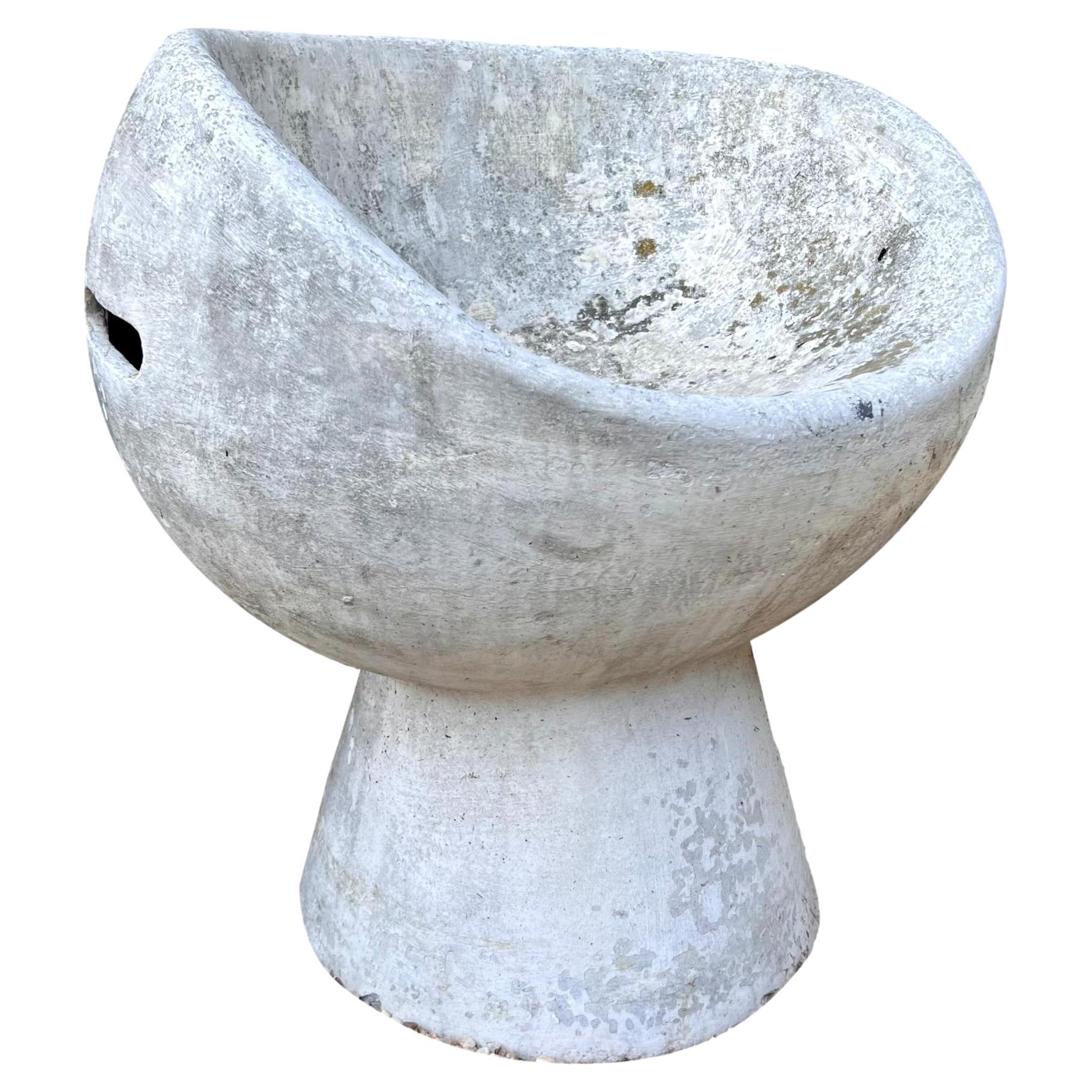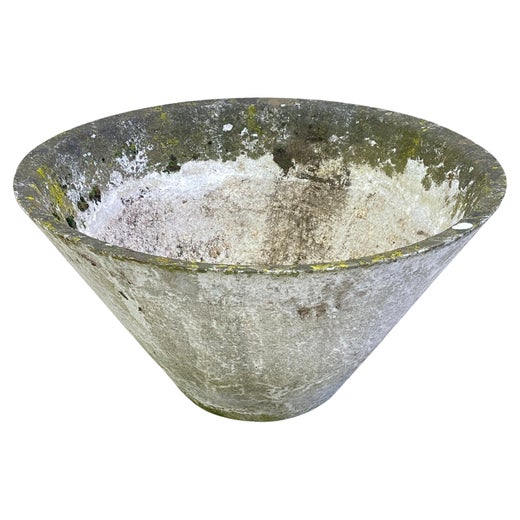Willy Guhl Steel and Concrete Design Bench, Switzerland, 1950s
About the Item
- Creator:Willy Guhl (Designer)
- Dimensions:Height: 27.56 in (70 cm)Width: 78.75 in (200 cm)Depth: 31.89 in (81 cm)Seat Height: 18.9 in (48 cm)
- Style:Mid-Century Modern (Of the Period)
- Materials and Techniques:
- Place of Origin:
- Period:
- Date of Manufacture:1950
- Condition:Refinished. Wear consistent with age and use. Minor fading. The iron structure has been completely restored, sanded and repainted with orange paint. Work carried out by a professional car/vehicle body repairer and painter.
- Seller Location:leucate, FR
- Reference Number:1stDibs: LU7285236503092
Willy Guhl
Decades prior to the mass popularity of neo-industrial cement floors and furniture taking shape, there was Willy Guhl. The Swiss creative is considered one of the first “industrial” designers in his home country. He pioneered a rugged, organic style of modern furniture and decor — stylish planters, shapely seating and lots more — that remains widely coveted by many today.
Guhl was born in 1915 in Stein am Rhein and worked as a carpenter before beginning studies at the Zurich School of Applied Arts (known today as the Zurich University of the Arts), where he would go on to teach for nearly 40 years.
While Guhl is well-known for his range of provocative garden elements as well as his patio and outdoor furniture, today’s legion of mid-century modern enthusiasts are likely familiar with the designer’s iconic Loop chair (introduced in 1954). For this sculptural seat and other furnishings, Guhl tended toward industrial materials, which he bent and shaped into organic forms for a striking juxtaposition. Much of his work is crafted from either concrete or Eternit, a mixture of cement and asbestos developed by the Belgian company Etex, which, in the 1950s, commissioned Guhl and his students at the School of Applied Arts to conceive planters in the material. The resulting vessels — some hourglass-shaped, some in the form of handkerchiefs, all suitable for indoors or exteriors — remain some of Guhl’s most collectible pieces.
Guhl’s affiliation with the Swiss “neo-functional” movement centered on the idea of simplifying design without sacrificing form. According to Guhl, his mission was “achieving the most with the minimum of effort.”
In addition to his work as a designer, Guhl left his mark on subsequent creatives through his 39-year tenure at his alma mater, where he was instructor to the likes of Robert Haussmann, Kurt Thut and Bruno Rey. Modern-day shoppers at IKEA owe Guhl a debt of gratitude too. He was an early advocate of flat-pack furniture, championing its ability to make good design more widely accessible.
At its core, though, Guhl’s work was inherently human-centric: “At the center of my efforts, I put people and their living requirements,” he once said. “My products must be useful to people.” Guhl died in 2004 at the age of 89.
Find a range of vintage Willy Guhl furniture and decorative objects on 1stDibs.
- ShippingRetrieving quote...Ships From: leucate, France
- Return PolicyA return for this item may be initiated within 14 days of delivery.
- Pair of Concrete Loop Chair Design by Willy Guhl, 1960sBy Willy GuhlLocated in leucate, FRTwo concrete beach or pool lounge chairs. Loop model created by designer Willy Guhl in the 1950s. The Loop chair features a single sheet of sea...Category
Mid-20th Century French Patio and Garden Furniture
MaterialsConcrete
- Pair of Concrete Ball Armchairs, Design by Willy Guhl, 1960sBy Willy GuhlLocated in leucate, FRPair of ball armchairs created by designer Willy Guhl in the late 1960s. Sculptural armchairs, organic design reminiscent of a mushroom. Ideal for a ...Category
Mid-20th Century French Patio and Garden Furniture
MaterialsConcrete
- Georges GOUZY earthenware vase, fish design and polychrome enamel, France 1950sLocated in leucate, FRGeorges GOUZY An earthenware baluster vase with fish design and polychrome enamel. Carved signature, " G. Gouzy - L'atelier Bormes " Unique w...Category
Vintage 1950s French French Provincial Vases
MaterialsEnamel
- Adrien Audoux & Frida Minet design horse collar rope mirror, France 1950sBy Adrien Audoux and Frida MinnetLocated in leucate, FRDesign rope wall mirror attributed to Adrien Audoux & Frida Minet. Mirror shaped like a horse collar. Original oval shaped mirror has light fogging Mirror frame comprised of signa...Category
Mid-20th Century French French Provincial Wall Mirrors
MaterialsRope, Mirror
- De Sede Design Camel Leather Patchwork Storage Ottoman, Switzerland 1970sBy De SedeLocated in leucate, FRCamel patchwork leather storage ottomans with open top by Swiss designer De Sede. Original soft leather with beautiful patina. Good condition. 1970s. Many colors and sizes avail...Category
Vintage 1970s Swiss Space Age Ottomans and Poufs
MaterialsLeather, Fabric, Wood
- De Sede Design Black Leather Patchwork Storage Ottoman, Switzerland 1970sBy De SedeLocated in leucate, FRBlack patchwork leather storage ottomans with open top by Swiss designer De Sede. Original soft leather with beautiful patina. Good condition. 1970s. Many colors and sizes avail...Category
Vintage 1970s Swiss Space Age Ottomans and Poufs
MaterialsLeather, Fabric, Wood
- Willy Guhl Concrete and Steel Floating Bench, 1960s SwitzerlandBy Willy GuhlLocated in Los Angeles, CARemarkable mid-century floating concrete bench by Swiss Architect Willy Guhl. Circa 1960s. Sturdy and substantial. Holds the weight of 3 adults easily. Perfect minimal design as is c...Category
Vintage 1960s Swiss Modern Benches
MaterialsConcrete, Steel
- Willy Guhl Concrete and Steel Floating Bench, 1960s SwitzerlandBy Willy GuhlLocated in Los Angeles, CARemarkable mid-century floating concrete bench by Swiss Architect Willy Guhl. Circa 1960s. Sturdy and substantial. Holds the weight of 3 adults easily. Perfect minimal design as is c...Category
Vintage 1960s Swiss Modern Benches
MaterialsConcrete, Steel
- Willy Guhl Green Fiberglass and Steel Bench, 1960s SwitzerlandBy Willy GuhlLocated in Los Angeles, CARemarkable mid-century floating bench by Swiss Architect Willy Guhl. Circa 1960s. Perfect minimal design as is common with the Swiss designer. Light weight but sturdy. The electric g...Category
Vintage 1960s Swiss Benches
MaterialsMetal
- Willy Guhl Concrete Curved Bench, 1960s, SwitzerlandBy EternitLocated in Los Angeles, CASubstantial midcentury concrete seat/ bench by Eternit, circa 1960s. Perfect minimal concave design with convex sides that bow out gently. The bench is made of solid fiber cement which allows it to develop an incredible patina. Factory drilled drainage holes in the seat. A beautiful piece with a strong presence. Very sturdy and able to hold 1-2 adults. These can also be placed together in a variety of arrangements to make a different designs and seating arrangements. These seats are also perfectly compatible with our Willy Guhl Concrete Benches...Category
Vintage 1960s Swiss Modern Benches
MaterialsConcrete
- Willy Guhl Concrete Pod Chair, 1960s SwitzerlandBy Willy GuhlLocated in Los Angeles, CAStunning concrete pod chair designed by Swiss Architect Willy Guhl. Hand made in Switzerland by Eternit in the 1960s. Gorgeous patina. Factory drill...Category
Vintage 1960s Swiss Patio and Garden Furniture
MaterialsCement
- Willy Guhl Concrete Pod Chair, 1960s SwitzerlandBy Willy GuhlLocated in Los Angeles, CAStunning concrete pod chair designed by Swiss Architect Willy Guhl. Hand made in Switzerland by Eternit in the 1960s. Gorgeous patina. Factory drill...Category
Vintage 1960s Swiss Patio and Garden Furniture
MaterialsCement
